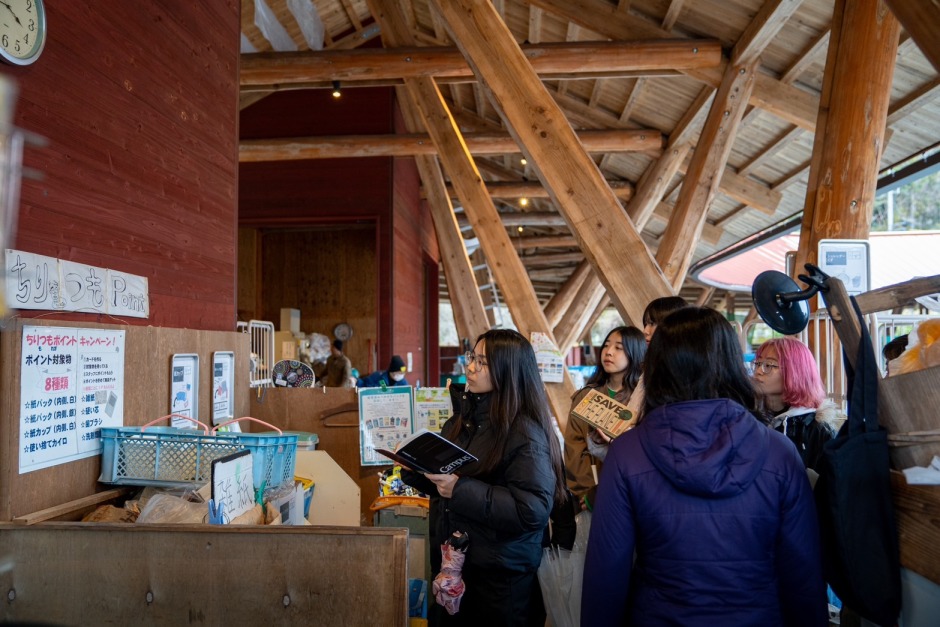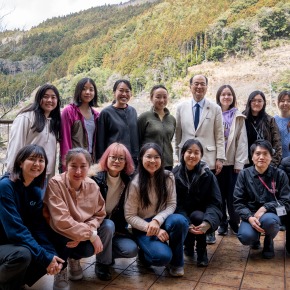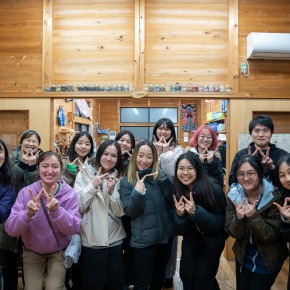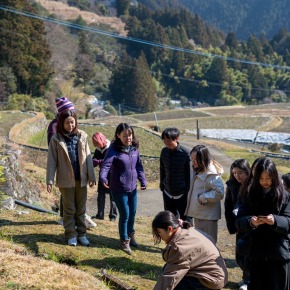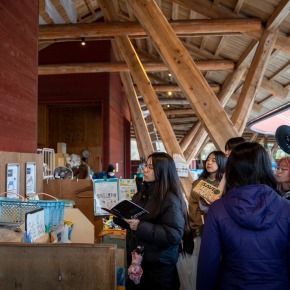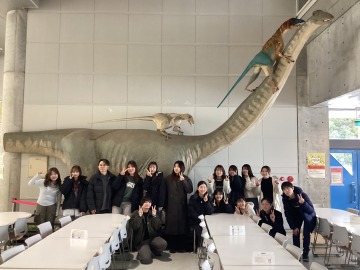Overview of Activities
Destination: Tokushima
Participants: 10 students
Period: March 15, 2025 (Saturday) to March 18, 2025 (Tuesday)
Activity Report
We visited Kamikatsu Town in Tokushima Prefecture, which made Japan’s first Zero Waste Declaration in 2003, to deeply study environmental issues and initiatives aimed at solving them. We also gained a deeper understanding of rural relocation, such as U-turn and J-turn migration, and the lifestyles associated with it.
On the first day, we learned about the zero waste initiatives undertaken in Kamikatsu Town at the Kamikatsu Zero Waste Center (WHY).
On the second day, we enjoyed the nature of Kamikatsu Town through a hike up Imainudake Mountain, and in the afternoon, we listened to a valuable lecture about waste separation from a resident of Kamikatsu Town. The story also included an episode about an elderly person left behind by the town’s waste sorting policy, which gave me a lot to consider.
On the third day, we attended lectures at the Kayabuki school about the natural environment and local residents’ lifestyles. In the afternoon panel discussion, where we heard from migrants about rural life, dormitory residents actively asked questions and exchanged opinions.
On the final day, after a lecture by the representative of a company engaged in the leaf business—Kamikatsu Town’s core industry—we visited the fields to deepen our understanding of the leaf business.
Finally, participants had presentations to present what they learned and felt during the study tour, and how they plan to act after the study tour. Please note that this program was conducted in English.
Experience Report from a participant
This study trip taught me about the difficulties that depopulated areas face, approaches to sustainability, and creative business that revitalize the country.
Growing up in Tokyo and Nagoya, I had never imagined how life in a depopulated area differed from that in a central big city in Japan. Kamikatsu, a small town in Tokushima Prefecture, has only 1,400 people; we visited there and had the opportunity to talk with residents who explained many valuable things.
On the arrival day, we visited a Zero Waste Center. Kamikatsu is known as the first town to declare zero waste, which means they recycle most of their waste, avoiding landfills and the use of incinerators. People categorize them into more than 40 categories. What surprised me was that they have a point system through which you can earn points by bringing specific products. These points can be used to exchange daily necessities, school supplies, and more; this not only accelerates the recycling system but also motivates citizens at the same time. The ideas and actions related to a sustainable life were astonishing.
On the second day, we did a nature hike in the forest and then listened to Hidemi-san’s story at the hotel. It was a rainy day, and moss was growing everywhere in the forest. I felt as if we were inside a fantasy movie. We had a cup of Awabancha, traditional tea in the halfway up the mountain. Back in the hotel, Hidemi-san told us that her grandparents had difficulties categorizing waste into more than 40 categories, and how they hid their waste in the mountains. This incident highlights the issues that older generations will face shortly.
On the third day, Tomomi-san who moved to the town recently told us about the abandoned houses in Kamikatsu. She explained, even if people want to live in Kamikatsu, new residents are not welcomed to live with locals because most of the time they hesitate to pass down their homes to another. She shared her own story which she fell in love with the warm community there, but she was only able to stay at new residential area that are a little far from the main locals. Her anecdote revealed the negative side of regional migration in Japan.
On the last day, we heard from Mr. Yokoishi, who created an innovative business for people living in the town. His business is to plant and sell special leaves used for high-end Japanese cuisine restaurants. His idea gave hope to the peopleof the country and many obtained their chances for success which eventually flourished the town itself. People began to revitalize and start anew, embracing their wonderful lives. You might be surprised to hear that some grandmothers earn millions of yen per month.
In conclusion, my four days experience in Kamikatsu changed my view of the countryside. As Japanese depopulation continues to accelerate, we should consider more sustainable living. The visit also prompted me to think about how we need to focus on housing availability for new residents and to envision a hopeful future for longer life.
Chitose Shindoh




